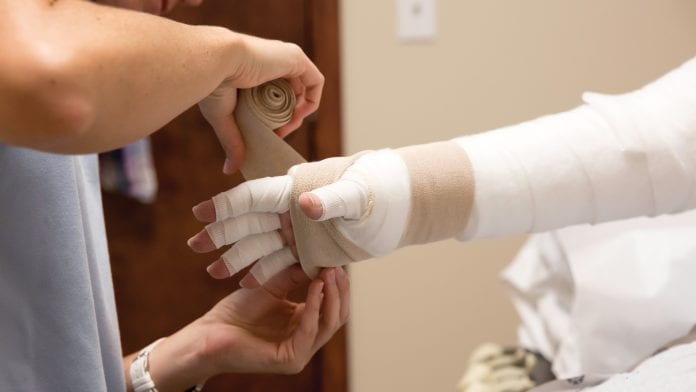
Health Europa takes a closer look at illnesses related to the lymphatic system and the role of the European Society of Lymphology.
The lymphatic system constitutes the most important part of the human immune system, and untreated lymphological illness can lead to serious impairments in everyday life. Against this background, the European Society for Lymphology (ESL) was first created in 1978 under the name European Group of Lymphology. The society’s aim is to educate, raise awareness and bring together experts and professionals to ensure greater research and understanding of lymphatic illnesses.
Every year the society holds a congress whereby professionals can present and debate new research and knowledge around the topic. The meetings touch on conservative treatment for lymphatic disorders, surgery and micro-surgery in lymphatic insufficiency, complications in lymphoedema, and the quality of life issues that patients with lymphoedema can be faced with. The next ESL congress will go ahead in May of this year and will play host to the first ever Group R&D Clinical Applications Flourescence Imagings (GCAFI) meeting.
The introduction of the GCAFI meeting to the ESL congress is imperative to enabling greater understanding surrounding lymphology and will be dedicated to the centralised bringing together of different associations to ensure the meeting delivers the best possible research outcomes.
The GCAFI will be bringing forth their knowledge on the topic of near infra-red fluorescence imaging (NIRFI) of lymph nodes and cancers, including:
- NIRFI of SLN after peri-tumoral injection of ICG
- Opto-acoustic imaging and NIRFI
- NIRFI of lymph node metastases after intra-venous injection of ICG
- NIRFI of cancers after intra-venous injection of ICG
- NIRFI of lymph node metastases after intra-venous injection of fluorescent molecules
- NIRFI of cancers after intra-venous injection of fluorescent molecules
- NIRFI for evaluation of the vascularisation
- Endoscopic NIRFI.
Cancer and the lymphatic system
The lymphatic system has many crucial functions as it is the most important part of the human immune system. One of the functions of the lymphatic system includes the transport and removal of waste for various substances that reach the intercellular spaces via the blood vessels – it aids the removal of waste which cannot be released any other way.
The substances which are transported and removed are known as the lymph obligatory load and are usually made up of proteins, dietary fats, cells and cell debris, and also pathogens.
The ESL expresses the importance of early detection and early treatment of lymphatic system issues, including lymphoma. Lymphoma is a cancer of the lymphatic system, and it is known to affect a type of white blood cell known as lymphocytes, which are integral to the immune system and help to fight disease in the body. Lymphoma is actually the most common blood cancer in Europe, as well as being the fifth most common cancer overall.
Lymphoma can spread all around the body and travel throughout the whole lymphatic system. The cancerous lymphoma cells can also travel in the bloodstream to organs such as the bone marrow, liver or the lungs – the cells can then continue dividing to form a new area of lymphoma.
Due to lymphoma’s ability to travel around one’s body, growing at a rapid rate and the intensity in its number of affected patients, the work that the ESL is doing with experts and professionals is vital.
Hodgkin lymphoma and non-Hodgkin lymphoma
There are two major sub-types of lymphoma, and they both have very similar names; one is called Hodgkin lymphoma and the other non-Hodgkin. Both types of lymphoma are named after Dr Thomas Hodgkin’s groundbreaking research on the symptoms of the diseases; however, both are very different.
The main difference between the two cancers is the presence of mutated B lymphocytes that are five times larger than normal lymphocytes, called Reed-Sternberg cells; if a biopsy from an affected lymph node contains Reed-Sternberg, the patient is diagnosed with Hodgkin lymphoma.
Hodgkin lymphoma is much rarer than non-Hodgkin and there are six varieties of the disease, the most common being nodular sclerosis classical Hodgkin lymphoma and mixed cellularity classical Hodgkin lymphoma, which account for 90% of all cases. This is in contrast to non-Hodgkin lymphoma, which is the seventh most diagnosed cancer and has more than 61 types and sub-types.
Lymphoedema
It is estimated in the UK that 240,000 people are living with lymphoedema. The condition refers to a swelling that develops as a result of an impaired lymphatic system not developing properly or from trauma/damage – in other words, an abnormal accumulation of protein-rich fluid.
The condition develops when lymph nodes or vessels become damaged or blocked and can be as a result of the removal of lymph nodes through surgery. When lymph fluid cannot pass through the vessels or the lymph nodes and the fluid cannot drain away in the usual way, it causes chronic swelling around the site.
Lymphoedema never goes away as the causes can’t be reversed; however, the swelling can be reduced in most cases, particularly when it is diagnosed early.
Often lymphoedema can be caused by cancer or its treatment, particularly if a patient has had to have their lymph nodes removed as part of their treatment. Lymphoedema can develop at any point after cancer treatment; however, the most common area of development is in the arm or the leg.
Although anyone who has had cancer treatment which affects their lymph nodes is at risk of developing lymphoedema, the risk is greater if:
- A patient has had both surgery and radiotherapy to the lymph nodes, and/or
- The affected area includes the armpit, groin or neck area.
The above provides just a snapshot of the complicated issues affecting the lymphatic system and make clear the importance of a scientific and international organisation such as the European Society of Lymphology.
Please note, this article will appear in issue 8 of Health Europa Quarterly, which will be published in February 2019.






















